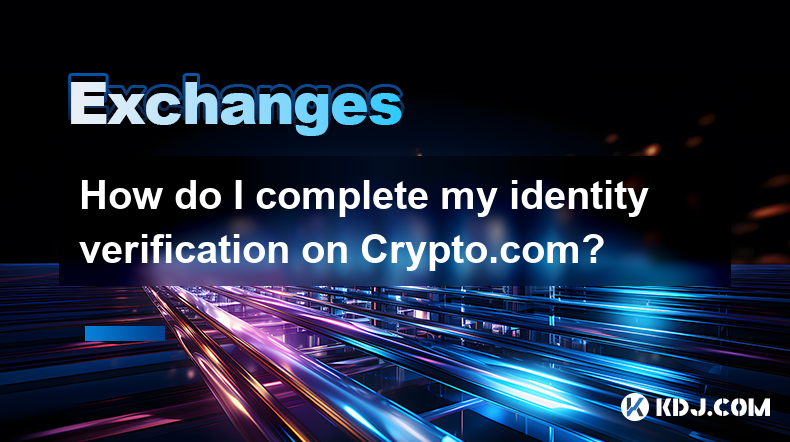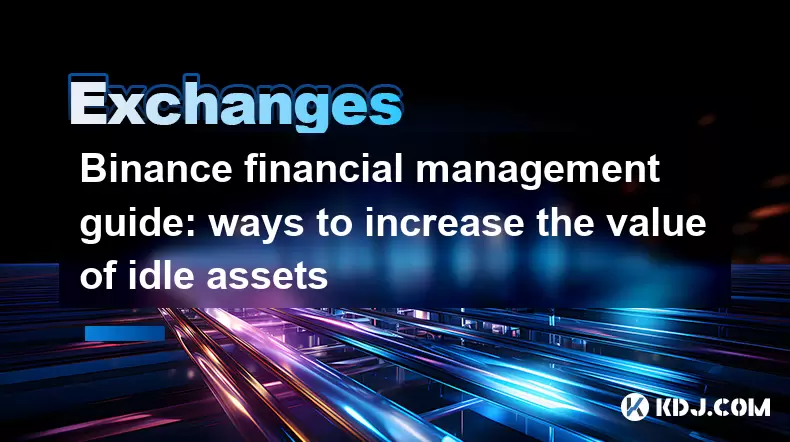-
 Bitcoin
Bitcoin $107,341.7259
0.15% -
 Ethereum
Ethereum $2,438.6204
0.70% -
 Tether USDt
Tether USDt $1.0003
-0.02% -
 XRP
XRP $2.1866
1.94% -
 BNB
BNB $649.0952
0.36% -
 Solana
Solana $150.9602
5.63% -
 USDC
USDC $0.9999
0.00% -
 TRON
TRON $0.2742
0.40% -
 Dogecoin
Dogecoin $0.1645
1.93% -
 Cardano
Cardano $0.5669
1.18% -
 Hyperliquid
Hyperliquid $37.8286
4.19% -
 Bitcoin Cash
Bitcoin Cash $491.4669
-2.74% -
 Sui
Sui $2.8150
3.06% -
 Chainlink
Chainlink $13.4184
2.91% -
 UNUS SED LEO
UNUS SED LEO $9.0809
0.27% -
 Avalanche
Avalanche $18.0295
2.60% -
 Stellar
Stellar $0.2396
1.19% -
 Toncoin
Toncoin $2.8587
0.13% -
 Shiba Inu
Shiba Inu $0.0...01160
2.59% -
 Litecoin
Litecoin $86.4192
1.45% -
 Hedera
Hedera $0.1486
1.19% -
 Monero
Monero $308.4324
0.87% -
 Polkadot
Polkadot $3.4202
1.43% -
 Bitget Token
Bitget Token $4.6436
-0.34% -
 Dai
Dai $0.9998
-0.02% -
 Ethena USDe
Ethena USDe $1.0002
0.00% -
 Uniswap
Uniswap $7.1527
3.29% -
 Pi
Pi $0.5357
-8.45% -
 Pepe
Pepe $0.0...09588
4.61% -
 Aave
Aave $259.9759
0.81%
How do I complete my identity verification on Crypto.com?
Crypto.com's identity verification involves submitting personal info, ID docs, proof of address, and a selfie to comply with AML and KYC regulations for secure trading.
Apr 01, 2025 at 07:43 pm

Navigating Crypto.com's Identity Verification Process
Crypto.com, like many other cryptocurrency exchanges, requires users to complete identity verification (KYC) to comply with anti-money laundering (AML) and know-your-customer (KYC) regulations. This process is crucial for securing your account and ensuring a safe trading environment. Failure to complete verification will limit your access to many of the platform's features.
The verification process on Crypto.com typically involves several steps. The exact requirements may vary slightly depending on your location and the level of verification you aim to achieve. Generally, you'll need to provide personal information and supporting documentation. Let's break down the process step-by-step.
Step-by-Step Identity Verification on Crypto.com
Step 1: Accessing the Verification Section: Log in to your Crypto.com account. Navigate to your profile settings. You should find a section dedicated to "Verification" or "KYC." Click on it to begin the process.
Step 2: Providing Personal Information: You'll be prompted to enter your personal details. This usually includes your full legal name, date of birth, address, and nationality. Ensure the information you provide matches your official documents precisely. Any discrepancies can lead to delays or rejection.
Step 3: Uploading Identification Documents: This is a crucial step. You'll need to upload clear, high-resolution images or scans of your government-issued identification documents. This typically includes a passport, driver's license, or national identity card. Make sure the documents are valid and not expired. Follow the platform's guidelines for image quality and formatting carefully.
Step 4: Proof of Address: In addition to identification, you'll likely need to provide proof of your current residential address. Acceptable documents often include utility bills (electricity, gas, water), bank statements, or official government mail addressed to you at your current address. The document should not be older than three months.
Step 5: Selfie Verification: Many platforms, including Crypto.com, now include a selfie verification step. You'll be asked to take a picture of yourself holding your government-issued ID. This helps verify your identity and prevent fraud. Ensure the image is well-lit and clearly shows your face and the ID.
Step 6: Review and Submission: Before submitting your application, carefully review all the information and documents you've provided. Ensure everything is accurate and complete. Once you're confident, submit your application for review.
Understanding Verification Levels on Crypto.com
Crypto.com might offer different verification levels. Basic verification might allow you to deposit and withdraw smaller amounts, while higher verification levels unlock access to more features, such as higher transaction limits and potentially access to certain products or services. The requirements for each level will vary. Check the Crypto.com website for the most up-to-date information on verification levels and their associated requirements.
Remember that providing false or misleading information during the verification process is a serious violation and can lead to account suspension or even legal consequences. Always ensure the accuracy of the information you provide.
Troubleshooting Common Issues
My verification is taking a long time. What should I do? Verification processing times can vary depending on the volume of applications and the thoroughness of the review. Check your application status regularly through your Crypto.com account. If it's been an unusually long time, contact Crypto.com support for assistance. Provide your application reference number if you have one.
My verification was rejected. What are the reasons? Common reasons for rejection include blurry or low-quality images, discrepancies between the provided information and official documents, or invalid or expired documents. Carefully review the rejection notification for specific reasons and resubmit your application with corrected information and clearer images.
What happens if I don't complete verification? Without completing verification, your access to Crypto.com's services will be significantly limited. You may only be able to access basic features, and your transaction limits will be very low or nonexistent. You may not be able to withdraw funds from your account.
What documents are accepted for proof of address? Crypto.com typically accepts utility bills (electricity, gas, water), bank statements, or official government mail. These documents must be recent (usually within the last three months) and clearly show your full name and current address.
What should I do if I encounter technical difficulties during the verification process? If you experience any technical problems during the verification process, contact Crypto.com's customer support. They can assist with troubleshooting issues and provide guidance. Be prepared to provide details about the specific problem you encountered.
Is my information secure during the verification process? Crypto.com employs security measures to protect user data during the verification process. However, it's essential to ensure you're on the official Crypto.com website and not a phishing site before entering any personal information. Look for the "https" in the URL and verify the website's authenticity.
How long does the verification process usually take? The processing time varies, but it generally takes a few days to a few weeks. The exact duration depends on various factors, including the volume of applications and the completeness of the information provided.
Can I use a scanned copy of my ID instead of a picture? Yes, Crypto.com typically accepts both scanned copies and clear photographs of your identification documents. Ensure the image quality is high enough for clear readability. Avoid using screenshots or low-resolution images.
What if my name has changed? If your name has changed, you will need to provide documentation showing the name change, such as a marriage certificate or legal name change document. This will be required to ensure the information matches your official records.
Disclaimer:info@kdj.com
The information provided is not trading advice. kdj.com does not assume any responsibility for any investments made based on the information provided in this article. Cryptocurrencies are highly volatile and it is highly recommended that you invest with caution after thorough research!
If you believe that the content used on this website infringes your copyright, please contact us immediately (info@kdj.com) and we will delete it promptly.
- XRP, Ripple, and Bitcoin: Decoding the Latest Crypto Moves
- 2025-06-29 08:30:13
- NBA Legend Scottie Pippen's Crypto Picks: SHIB and XRP in the Spotlight
- 2025-06-29 08:50:12
- Bitcoin, US Strategy, and Cryptocurrency Regulation: Navigating the Digital Frontier
- 2025-06-29 09:10:13
- Chainlink's $17 Breakout: Bullish Momentum Fueled by Mastercard Partnership
- 2025-06-29 08:30:13
- Crypto Launches Q3 2025: Top Picks to Watch
- 2025-06-29 09:10:13
- Gemini AI's 2025 Crypto Forecast: Altcoin Boom Ahead?
- 2025-06-29 08:52:14
Related knowledge

Binance spot market analysis: seize the best time to buy and sell
Jun 19,2025 at 04:56pm
Understanding the Binance Spot MarketThe Binance spot market is one of the most popular platforms for cryptocurrency trading globally. It allows users to trade digital assets at current market prices, making it essential for traders aiming to buy low and sell high. Unlike futures or margin trading, spot trading involves direct ownership of the asset aft...

Binance fund management secrets: reasonable allocation to increase income
Jun 22,2025 at 02:29pm
Understanding Binance Fund ManagementBinance fund management involves strategic allocation of your cryptocurrency assets to optimize returns while managing risk. The key to successful fund management lies in understanding how different investment options on the Binance platform can be utilized to create a diversified portfolio. This includes spot tradin...

Binance trading pair selection skills: find the best buying and selling combination
Jun 23,2025 at 02:49am
Understanding the Basics of Trading Pairs on BinanceBefore diving into trading pair selection skills, it's essential to understand what a trading pair is. On Binance, a trading pair refers to two cryptocurrencies that can be traded against each other. For example, BTC/USDT means Bitcoin is being traded against Tether. Each trading pair has its own liqui...

Binance new coin mining strategy: participate in Launchpool to earn income
Jun 23,2025 at 11:56am
What is Binance Launchpool and how does it work?Binance Launchpool is a feature introduced by the world’s largest cryptocurrency exchange, Binance, to allow users to earn new tokens through staking. This platform enables users to stake their existing cryptocurrencies (such as BNB, BUSD, or other supported assets) in exchange for newly launched tokens. T...

Binance financial management guide: ways to increase the value of idle assets
Jun 19,2025 at 11:22pm
Understanding Idle Assets in the Cryptocurrency SpaceIn the fast-paced world of cryptocurrency, idle assets refer to digital currencies that are not actively being used for trading, staking, or yield farming. Holding these funds in a wallet without utilizing them means missing out on potential growth opportunities. Binance, as one of the leading platfor...

Binance flash exchange function guide: quick exchange of digital currencies
Jun 23,2025 at 12:29pm
What is the Binance Flash Exchange Function?The Binance Flash Exchange function is a powerful tool designed to allow users to instantly swap between supported cryptocurrencies without the need for placing traditional buy/sell orders. This feature simplifies the trading process by offering a direct exchange mechanism, eliminating the requirement to conve...

Binance spot market analysis: seize the best time to buy and sell
Jun 19,2025 at 04:56pm
Understanding the Binance Spot MarketThe Binance spot market is one of the most popular platforms for cryptocurrency trading globally. It allows users to trade digital assets at current market prices, making it essential for traders aiming to buy low and sell high. Unlike futures or margin trading, spot trading involves direct ownership of the asset aft...

Binance fund management secrets: reasonable allocation to increase income
Jun 22,2025 at 02:29pm
Understanding Binance Fund ManagementBinance fund management involves strategic allocation of your cryptocurrency assets to optimize returns while managing risk. The key to successful fund management lies in understanding how different investment options on the Binance platform can be utilized to create a diversified portfolio. This includes spot tradin...

Binance trading pair selection skills: find the best buying and selling combination
Jun 23,2025 at 02:49am
Understanding the Basics of Trading Pairs on BinanceBefore diving into trading pair selection skills, it's essential to understand what a trading pair is. On Binance, a trading pair refers to two cryptocurrencies that can be traded against each other. For example, BTC/USDT means Bitcoin is being traded against Tether. Each trading pair has its own liqui...

Binance new coin mining strategy: participate in Launchpool to earn income
Jun 23,2025 at 11:56am
What is Binance Launchpool and how does it work?Binance Launchpool is a feature introduced by the world’s largest cryptocurrency exchange, Binance, to allow users to earn new tokens through staking. This platform enables users to stake their existing cryptocurrencies (such as BNB, BUSD, or other supported assets) in exchange for newly launched tokens. T...

Binance financial management guide: ways to increase the value of idle assets
Jun 19,2025 at 11:22pm
Understanding Idle Assets in the Cryptocurrency SpaceIn the fast-paced world of cryptocurrency, idle assets refer to digital currencies that are not actively being used for trading, staking, or yield farming. Holding these funds in a wallet without utilizing them means missing out on potential growth opportunities. Binance, as one of the leading platfor...

Binance flash exchange function guide: quick exchange of digital currencies
Jun 23,2025 at 12:29pm
What is the Binance Flash Exchange Function?The Binance Flash Exchange function is a powerful tool designed to allow users to instantly swap between supported cryptocurrencies without the need for placing traditional buy/sell orders. This feature simplifies the trading process by offering a direct exchange mechanism, eliminating the requirement to conve...
See all articles

























































































